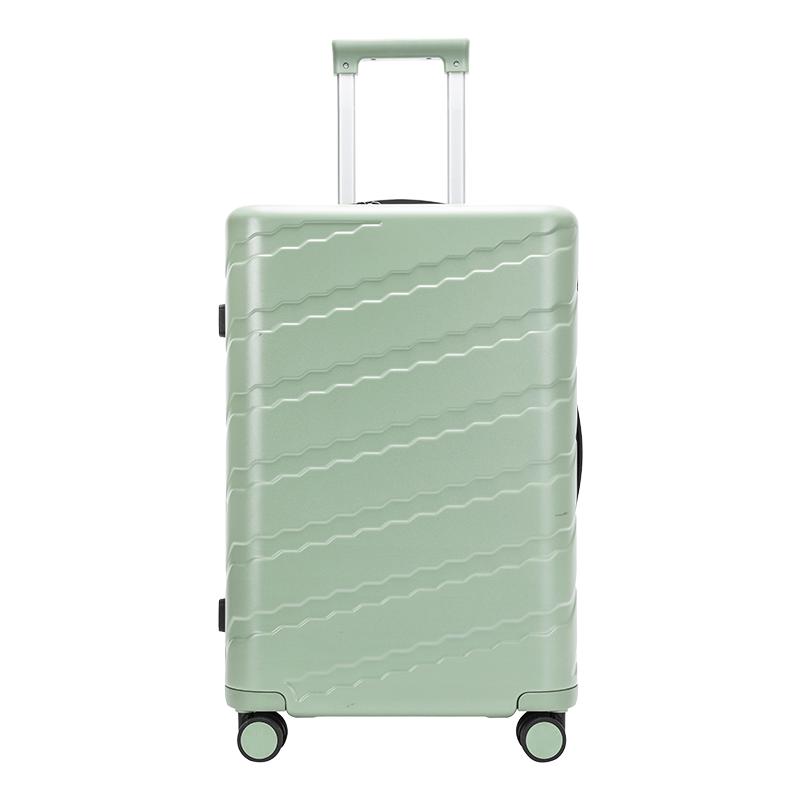Luggage Shopping Guide|No more hasty and blind selection
When preparing for a trip, the first essential consideration is the suitcase. However, with the multitude of types and styles available on the market, choosing the right one can be quite challenging. To avoid regretting a hasty decision that leads to an unsuitable suitcase, it's necessary to do thorough research before making a purchase.
What factors should you consider when selecting a suitcase? When purchasing a suitcase, one needs to consider the duration of the trip, durability, material, and destination, among other things. Let's discuss these selection criteria in detail.
Factor 1: Suitcase Size Suitcase sizes generally range from 16 to 32 inches.
Carry-on suitcases are typically under 20 inches and are suitable for trips lasting about 2 to 4 days. Most carry-on suitcases can be brought on the plane as hand luggage, reducing the waiting time for checked baggage. Therefore, they are very convenient for business trips; they are also useful for short trips or when carrying a lot of items on a regular basis. Carry-on suitcases can be considered versatile for many occasions!
Medium-sized suitcases are approximately 22 to 26 inches and are suitable for trips lasting about 5 to 7 days. This is the most common size seen at airports and can be used for both short and medium to long trips. Medium-sized suitcases offer ample space, making them ideal for winter travel or trips to colder regions where bulky warm clothing is required.
Large suitcases range from 28 to 32 inches and are suitable for trips lasting more than 7 days. They are ideal for long trips or for checking two people's luggage together, especially for those who need to bring a large amount of clothing. However, they are relatively larger and heavier, which may be difficult for petite women or elderly people to handle. Additionally, it's important to avoid overloading the suitcase, which can lead to excessive weight.
Factor 2: Suitcase Material The exterior materials of suitcases can generally be divided into two types: hardshell and softshell. These two types of suitcases differ significantly in appearance and characteristics.
Hardshell suitcases have a surface made of stiffer plastic or carbon fiber, offering good strength and waterproofing, and the locking mechanisms are robust, providing increased security.
Softshell suitcases are generally made of soft fabric, characterized by being lighter in weight and more affordable. The fabric material is stretchable, allowing for better storage compared to hardshell suitcases, making them suitable for carrying thicker items or a larger volume of luggage.
Factor 3: Destination The choice of suitcase also varies depending on the travel destination. For example, if you're traveling to the United States, you'll need a suitcase with a TSA-approved lock. A TSA lock is recognized by the Transportation Security Administration (TSA) and can be opened by TSA agents using special tools under certain circumstances. In the United States, where there is heightened security against terrorist attacks, if a suitcase has a lock other than a TSA lock, it will be broken to inspect the contents. Therefore, if you're traveling to the U.S., you'll need a suitcase with a TSA-approved lock or choose not to lock your checked luggage.
Additionally, depending on the destination, attention should be paid to the number of wheels on the suitcase. Generally, four-wheeled suitcases are more convenient to move. However, in Europe, where the roads are often uneven or cobblestoned, two-wheeled suitcases may be easier to maneuver, so it's important to check the road conditions at your destination in advance.
Factor 4: Carrying Regulations Whether you need to bring your suitcase into the cabin is also one of the key points in choosing a suitcase. Most airlines (on planes with more than 100 seats) stipulate that the dimensions of carry-on luggage must add up to less than 115 centimeters, and the length, width, and height must be within 55x40x25cm. Bringing a suitcase into the cabin can save time on checking baggage and waiting at the baggage carousel upon arrival. Moreover, keeping your carry-on luggage by your side eliminates concerns about the safety of your belongings, making it suitable for those carrying precision instruments or fragile items. However, it's crucial to pay close attention to the weight limits for carry-on luggage and regulations regarding prohibited items.
































There are no comments yet, so let's say a few words